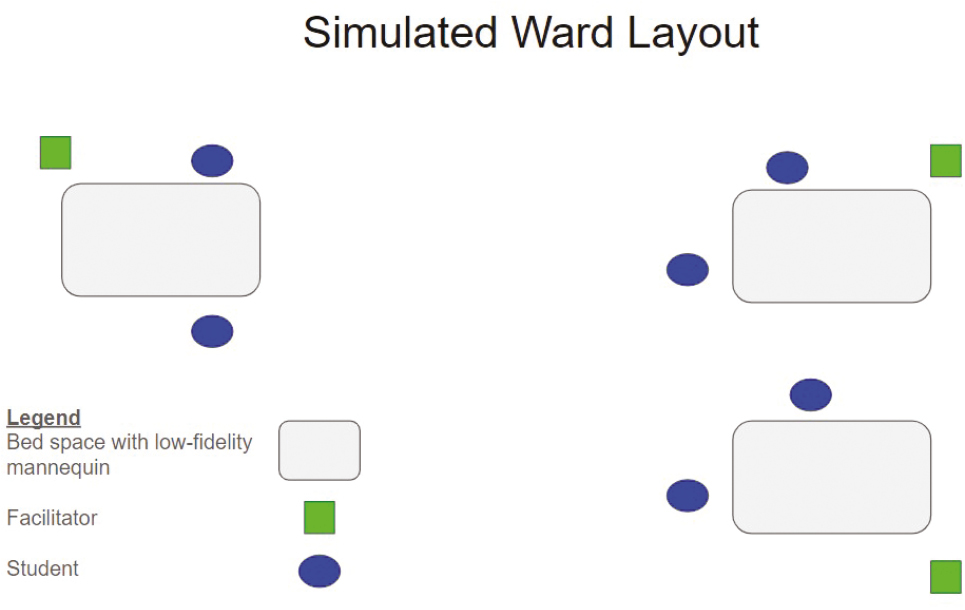
Chest radiograph (CXR) interpretation is an important skill expected at the foundation doctor level. CXR teaching provided by medical schools is often insufficient to prepare medical graduates [1]. This study’s aim was to evaluate whether CXR interpretation could be taught via an engaging, simulation-based approach.
We recruited third year medical students on their medicine and surgery clinical rotations. The programme consisted of three 15-minute simulation scenarios (tension pneumothorax, pleural effusion and pneumonia) on a simulated ward (Figure 1-A91). Low-fidelity mannequins were used and students were expected to use an ABCDE approach and to request appropriate imaging to aid their diagnosis and management. At each scenario, a CXR was provided upon request of the student participant. Students rotated through each scenario sequentially in pairs and were debriefed on CXR interpretation and acute illness management at the end of the session. Pre- and post-session questionnaires using 5-point Likert scales were taken using Google Forms. Statistical significance was calculated using the paired samples t-test.


Twenty participants attended the sessions. Before the session, the mean confidence at interpreting CXRs was 2.55 out of 5. After the session, mean confidence rose to 4.25 out of 5 (increased by 1.70, p < 0.00001). In terms of usefulness, participants rated the session 4.8 out of 5 on average. Free text comments mentioned the case mix, integration of radiographs into the ABCDE assessment and teaching on systematic methods to interpret radiographs as being assets of the programme.
Simulation can improve student confidence in CXR interpretation. Students find simulation-based scenarios to be an engaging and interactive way to learn about imaging. To improve student confidence and ability further, we could introduce multiple radiology-based sessions throughout their rotation.
Authors confirm that all relevant ethical standards for research conduct and dissemination have been met. The submitting author confirms that relevant ethical approval was granted, if applicable.
1. Chew C, O’Dwyer PJ, Sandilands E. Radiology for medical students: Do we teach enough? A national study. The British Journal of Radiology 2021;94(1119):20201308.